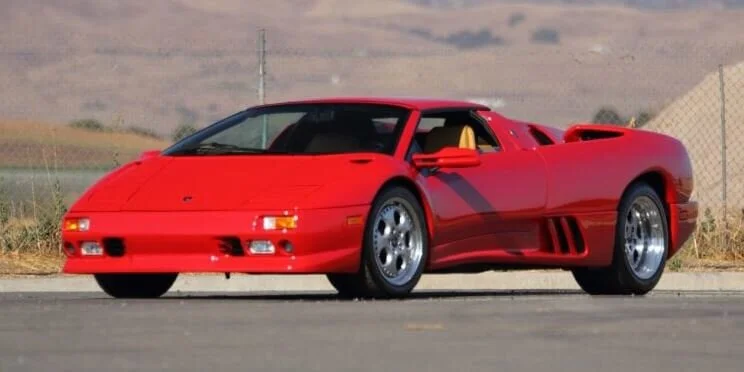We do not provide import/export services. This guide is for information only.
Once your vehicle is imported into the US, we can assist with registration and titling.
We have laws to keep us safe and protected. We trust in our authorities to do whatever is in our best interest. Then, we come across statutes such as the infamous 25 Year Import Rule and wonder… who are they really working for?
On the surface, this law sounds understandable. I mean, of course, they want everyone on the road to be safe and secure. Except, that’s not really what the 25 Year Rule is about. Contrary to popular belief, it’s never been about your safety.
Actually, they created this rule to protect the interests of the automakers and they have gone as far as to crush some beauties along the way. They have demolished everything from a classic Land Rover Defender to a Mini Cooper with falsified info and made sure to share the videos with the world to serve as a lesson as to what happens if you try to bring a car into the country when it’s not allowed.
All for the sake of safety, right?
I mean, the Defender and Mini Cooper came complete with modern safety technology that made them more than roadworthy. But no, according to this rule it would be far better to drive a “classic” 25-year-old import instead which might not have this technology.
Hopefully, you are starting to see my point here.
How Did The 25 Year Import Rule Begin?
The Gray Market Problem
Let’s talk about a man named Douglas deBoard. In the early 1980s, Douglas was an American living in Southern Germany. While there, he realized there was a lucrative market in importing Mercedes vehicles to the United States.
The European models had more horsepower and offered additional features that weren’t part of the American lineup. On top of that, they were often cheaper even after importation.
In 1980, about 1,500 gray market vehicles came to the United States. Just five years later, that number topped 60,000, with a third of them being Mercedes – thanks in no small part to enterprising people like Douglas deBoard. As a result, the automaker lost about $300 million in sales from the American market.
This soon became unacceptable.
Mercedes Fights Back
Instead of doing what they needed to provide Americans with the cars they wanted, Mercedes decided to fight back instead. They started in 1984 by warning consumers about the dangers of purchasing from the gray market. They said that aftermarket shops weren’t bringing the cars into compliance and it would cost the owner more than they were saving in the long run.
By 1988, Mercedes enlisted the help of other automakers as well. Their joint proposal became the Imported Vehicle Safety Compliance Act which banned the importation of cars that failed to meet the recently refreshed federal safety and emissions standards. That included providing ten vehicles for crash testing. Who has the resources to do that? Only the big guys.
Cars and Politics
Importers in Texas, New York, Florida and California all fought against the act, but they didn’t have a chance of winning. Representative Walker of Pennsylvania even called these companies out, saying that the bill was designed to help automakers make more money instead of protecting the public. Nevertheless, it passed without much fight.
The impact was clear. After the law was passed, gray market vehicle imports in the United States declined from 66,900 in 1985 to just 300 in 1995. It soon became all but impossible to import a car with a few select exceptions that didn’t much benefit the general public.
Even Mexican and Canadian vehicles are unable to meet many of our requirements, which is why it can be difficult to import a car from those places unless it’s more than 25 years old.
The 1998 Amendment: The 25 Year Rule
Then, in 1998, the National Highway Traffic Safety Administration issued the 25 Year Rule. This allowed vehicles older than 25 years to be admitted into the country because they are “collectible” – which in this instance is just another word for obsolete.
Clearly you see how ridiculous this is. We don’t have to submit cars older than 25 years for crash testing, we can drive them on public roads just like anything else, but the entire rule has to do with our safety?
No, what it really has to do with is the bottom line of the automakers. Since they started playing politics, we as consumers lose out and can’t have what we want – at least until the car is 25 years old.
This becomes even more obvious when you realize that many states don’t even have mandatory safety inspections for vehicles to be on their roads, an open invitation for rusty frames, bad ball joints, and myriad other safety concerns to endanger countless lives every day.
Attempts at Skirting the 25 Year Import Law
Now, you might think there are some ways around this rule, and there are. None of them are easy and many can lead to trouble.
You can often import a vehicle to the United States so long as you don’t plan to register it, i.e., for track use. Diplomats and members of foreign militaries can sometimes bring their cars with them to the United States. And citizens from other countries are usually allowed to keep their cars in the United States for up to a year.
The Show and Display rule protects some vehicles that have already received approval for entry. But those guidelines are incredibly strict; often only the most rare, exotic, and expensive vehicles are allowed.
There have also been companies working on finding loopholes. For example, some people found that shipping the car in pieces can make it legal to import as a “kit car.” They have the engine shipped in separately and assemble it stateside. While this might sound like a good idea, it’s still not legal to drive that car on the streets.
The Motorex Nissan Skylines
When discussing gray market importers, the conversation often comes back to Motorex. They were a California-based company that specialized in getting the new-at-the-time R34 Nissan Skyline to the United States in the wake of the passing of the 25 Year Rule. In 1999, they even had the outgoing model, the R33, crash tested at great cost to appease the government. And for a short time, it actually worked.
Motorex submitted their findings and petitioned to allow 1990-1999 GT-R and GTS models into the States. As a result of their efforts, many Skylines made it to American roads. The gig only lasted a few years, however, and the NHTSA put a stop to the party in 2005. They determined that the various Skyline models wouldn’t all perform the same in crash testing, even though Motorex had gathered data proving that they would.
At that point, the NHTSA determined that only the 1996-1998 R33 was allowed according to our safety standards. Not only did Motorex have to stop all operations, but the owner Hiroaki "Hiro" Nanahoshi was put in jail with a $1 million bail for a wide array of charges you can research on your own. Those events spelled the end for Motorex and few companies have even considered following in their path ever since.
Movements Against the 25 Year Rule
Anyone that learns the truth about the 25 Year Rule gets angry; there’s no way not to. Through the years, many people have turned their anger into action by filing petitions like that one from 2016 and this one from 2017. The first link cites that similar petitions have been brought forth no less than 4 times since the year 2010 – all to no avail.
The petitions have pretty much been a waste of time because you aren’t going to take on the automakers or a government that stands to lose money if they anger the foreign car companies.
As it stands, we are “graciously” allowed to drive gas-guzzling classic cars that don’t feature any modern safety technology. Because, you know, it’s all for our safety. It’s an injustice that we can’t have the cars we want, especially the modern ones that feature plenty of safety technology. Personally, I would be one of the first to drive an R34 Nissan GT-R if I was allowed to.
Thankfully, there is a massive industry built around importing grey market cars to the United States – the newest of which were built well within the realm of modern safety standards and can easily be treated as a regular car. But as the law currently stands, until the car you want becomes 25 years old, you can’t legally import it into the United States for road use.
We understand your frustration and think it’s just as unfair as you do, but there’s little that any of us will ever be able to do about it, for now. In the meantime, if you need a title and license plates for a car you’ve just imported, we’ve got you covered. Dirt Legal provides titles, license plates, and registrations for legally imported vehicles through our Imported Vehicle Titling Service as well as domestic vehicles and just about anything else with wheels. Pair with our LLC Formation Service for a tax-free experience and add our Automatic Registration Renewal to keep things hassle-free and eliminate the DMV altogether. Click the button below to learn more.
We do not provide import/export services. Once your vehicle is imported into the US, we can assist with registration and titling.
We are not attorneys. This article is not legal advice. Cover image source

















If your car will be sitting all winter, fill the fuel tank before parking it. No special steps are needed to winterize a vehicle that’s driven regularly. Make sure the oil is the correct spec and that the coolant mixture is sufficient to withstand freezing. Also, use windshield wiper fluid that is designed to withstand freezing.